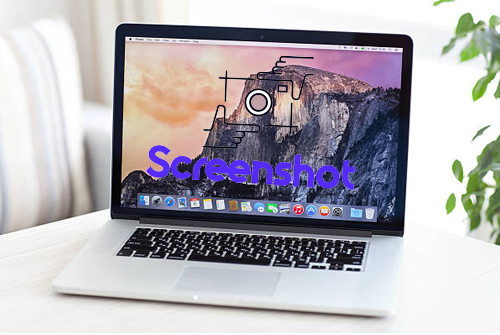How to Screenshot on Mac? There are three basic ways to take a screenshot with keyboard shortcuts on any recent Mac – plus a fourth technique if you have a MacBook Pro with a Touch Bar. Apple’s MacOS software also provides a number of choices for quickly saving, deleting, and opening the snapshot for annotation.
These ideas also apply to the most recent Macs, such as the 13-inch MacBook Pro with a new M2 CPU and the M2 MacBook Air. According to our preliminary testing, the same suggestions work in MacOS Ventura, the next operating system version, which is still in development.
The solution to the topic of how to screenshot on Mac isn’t immediately evident for many new Apple users, particularly those who are migrating from Windows and are used to that Prt Scrn (Print Screen) button.
Although taking a screenshot on a Mac is as simple as tapping a couple of keys, the fact is that Mac screen capture hasn’t always felt straightforward. For a long time, recording video of your screen was only possible using QuickTime Player, in addition to distinct key commands for screenshotting windows vs. smaller selections.
Table of Contents
How to Screenshot on Mac?

Here is the method to take Screenshot on Mac:
Method #1. Easy Annotation to Screenshot on Mac
If you use the Floating Thumbnail, you will have quick access to Markup tools for annotating your screenshot. You can swipe away the Floating Thumbnail or simply let it go, and it will be stored to the location where you last saved a snapshot. When you click the Floating Thumbnail, it will open in a Markup View preview window (rather than Preview) with all of the markup tools available in Preview.
- Right-click on the Floating Thumbnail to:
- Take a screenshot and save it to your desktop, Documents folder, or clipboard.
- Access it using Mail, Messages, Preview, or Photos.
- Display in Finder
- Delete
- Open it in the above-mentioned Markup preview window.
- Close (and save)
Method #2. Cmd-Shift-3
This keyboard shortcut takes a screenshot of the full screen.
Method #3. Cmd-Shift-4
Use this keyboard combination to transform your cursor into a crosshair, which you may drag to select a part of your screen to capture. To take the shot, let go of the mouse or trackpad.
After pressing Cmd-Shift-4, you have a few more options:
When you press and hold the spacebar, the crosshair transforms into a small camera icon that you can drag over any open window. To capture a screenshot of a window, click on it. This approach produces a screenshot with a white border around the window and a drop shadow.
Click and hold the spacebar (after dragging to highlight an area but before releasing the mouse button or trackpad): This keeps the shape and size of the selection area but allows you to rearrange it on the screen. If your initial selection region is off by a few pixels, simply hold down the spacebar to reposition it before releasing the mouse button to take a screenshot.
Hold down the Shift key (after drag to highlight an area but before releasing the mouse button or trackpad): This locks in each side of the selection area made with the crosshairs except the bottom edge, allowing you to move your mouse up or down to position the bottom border.
Release the Shift key and press it again without releasing the mouse button to adjust the right border of your selection area. By holding down the mouse button or touchpad and using the Shift key, you can switch between moving the bottom and right edges.
Method #4. Cmd-Shift-5
Cmd-Shift-5, a shortcut command introduced in MacOS Mojave in 2018, brings up a little panel at the bottom of your display with screen capture choices. You can capture the entire screen, a window, or a portion of your screen using one of three screenshot buttons.
Similarly, the two video-recording keys enable you to capture your entire screen or a portion of it. There is an X button on the left to shut the screenshot window, but you can alternatively exit by pressing the Escape key.
An Options button is located on the right side. It allows you to save your screenshot to the Desktop, Documents, Clipboard, Mail, Messages, Preview, or Other Location, and it also allows you to create a 5- or 10-second delay so you may line up elements that might otherwise disappear when you use your snapshot tool.
The Show Floating Thumbnail option is selected by default, which places a small preview thumbnail of your recently obtained screenshot in the lower-right corner of your screen, similar to the iOS snapshot technique. On your Mac, unlike on your iPhone, you can disable the preview thumbnail. Finally, you can choose whether to include your mouse pointer in a screenshot or video.
Method #5. Cmd-Shift-6
If you have an older 15-inch or 16-inch MacBook Pro, or a current 13-inch MacBook Pro, which is the very latest model with the Touch Bar, you can also capture a screenshot of what’s now displayed on the Touch Bar. Cmd-Shift-6 will take an extremely wide and slender screenshot of your Touch Bar.





